Visual Strategy Guide
This is a student project. For information on the actual US Peace Corps, please visit peacecorps.gov

This is a student project. For information on the actual US Peace Corps, please visit peacecorps.gov
The following is a brief overview of the US Peace Corps, as well as similar brands.
Welcome to the Visual Strategy Guide. We are beginning to start the process of rebranding the United States Peace Corps. Please note that this is a student project, unassociated with the true Peace Corps. The goal of this project is to take a brand that was formed on the idea of world peace and friendship, and extend it into something more that it is today.
The Peace Corps is an organization of the US Government that trains and deploys volunteers to provide international assistance.
Who is the Peace Corps?
Right now the Peace Corps is dedicated mostly to helping developing countries. While this is very important, there could also be other divisions dedicated to helping other parts of the world to truly achieve world peace.
The Peace Corps could begin developing strategies in order to figure out what it truly takes to achieve world peace and friendship. Teaching people how to effectively communicate with each other and learn to solve problems together.
The objective is to try to get to the core of what world peace is, and what it could be. Is there a way to develop strategies with world leaders on how to achieve world peace? What does world peace look like? Could possibly team up with international strategists to research what we can do to strive towards world peace.
“Peace requires the simple but powerful recognition that what we have in common as human beings is more important and crucial than what divides us.”Sargent Shriver
1961–1966
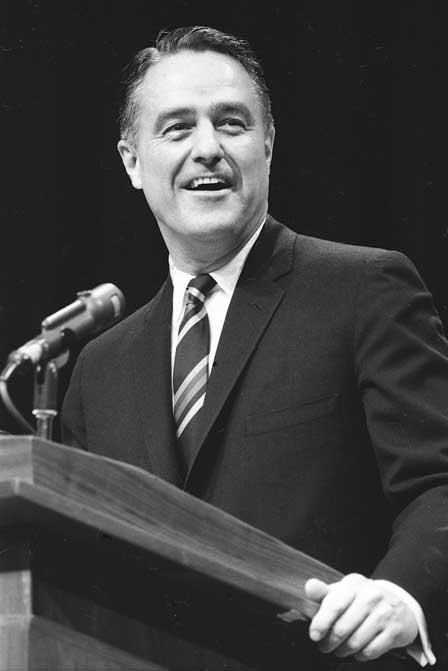
October 1960 —John F Kennedy first mentions an idea of the Peace Corps at a campaign speech.
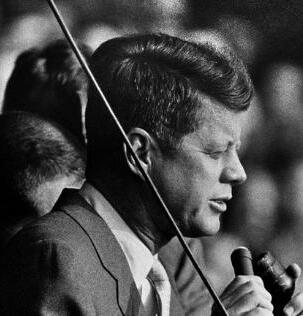
March 1961 —President Kennedy signs Executive Order 10924, establishing the Peace Corps.
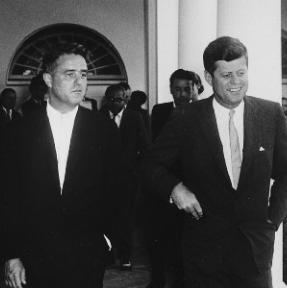
September 1961 —Congress passes the Peace Corps Act in order to mandate “promoting world peace and friendship”.
June 1966 —Over 15,000 Volunteers are now serving in countries around the globe.
May 1971 —President Richard Nixon declares the week of May 30–June 5 as “National Peace Corps Week” to honor the tenth anniversary.
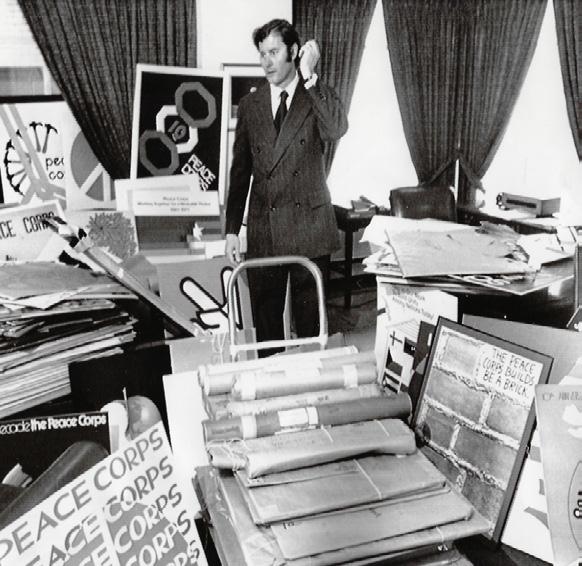
May 1971 —Peace Corps has a poster design contest with over 2,000 original artwork submissions. Flag and logo are introduced.
October 1977—Carolyn Robertson Payton becomes the first female African American Peace Corps Director. May 1979 —President Carter signs Executive Order 12137 granting the Peace Corps full autonomy.
September 1985 —Peace Corps has more women enter service than men for the first time in its history.
April 1988 —Barbara Jo white creates World Map Project, which promotes world map murals around the globe to encourage geography knowledge.
June 1989 —Paul D Cloverdell establishes the World Wise Schools (WWS) program to connect American educators with Peace Corps volunteers.
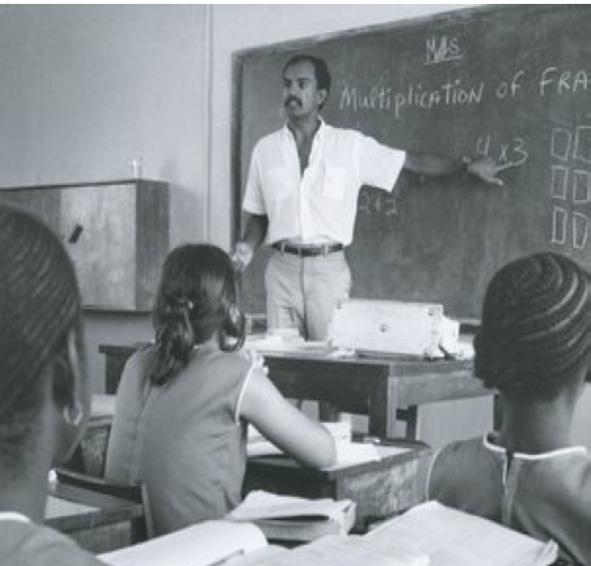
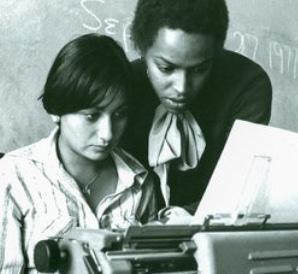
October 1993 —Carol Bellamy becomes the first Returned Peace Corps Volunteer (RPCV) Peace Corps Director
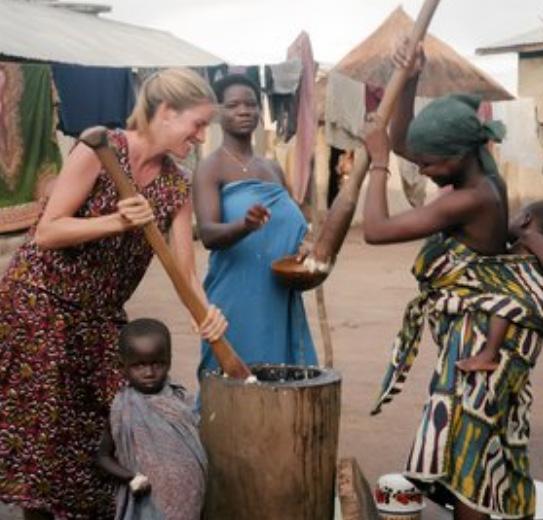
July 1995 —Camp GLOW (Girls Leading Our World) is established in Romania to encourage girls to become leaders.
December 1995 —After Hurricane Luis damaged infrastructure in Antigua, Peace Corps sent three volunteers for temporary aid. Initially called the Crisis Corps, it is now called Peace Corps Response and is focused on short-term humanitarian efforts.
May 2003 —Peace Corps gains an additional 1,000 volunteers to help combat HIV/AIDS.
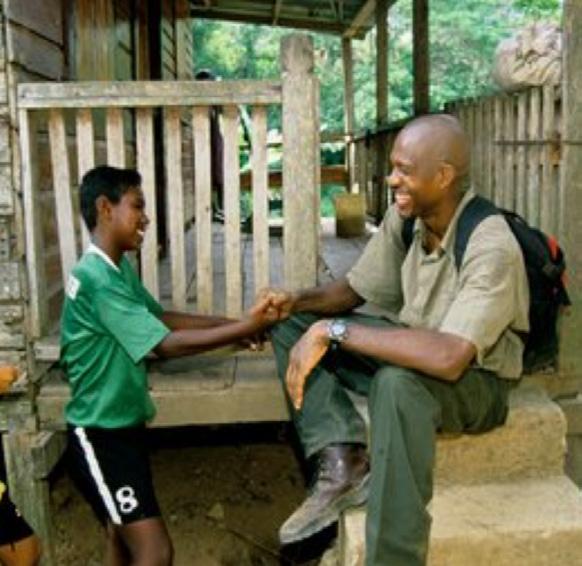
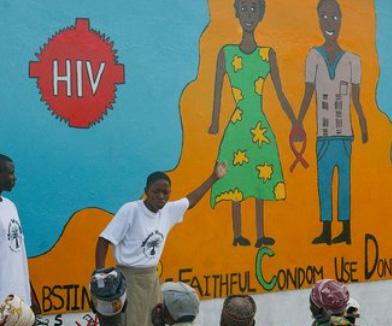
January 2009 —Volunteers return to Rwanda after leaving during the 1994 genocide. The mission being to work on secondary education and HIV/ AIDS treatment and prevention.
December 2009 —President Obama signs HR 3228, an appropriations package which included a $400 million budget for fiscal year 2010.
March 2011 —Peace Corps celebrates 50 years of promoting world peace.
March 2015 —President and First Lady Obama launch the Let Girls Learn Initiative, which helps expand education for girls in host communities.
June 2016 —Peace Corps rebrand for new logo and updated website.
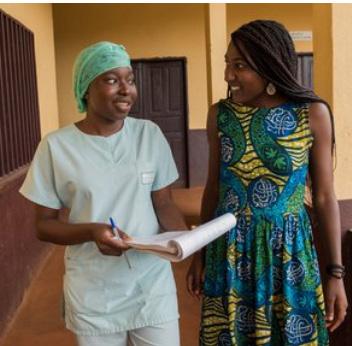
March 2020 —Covid-19 Pandemic. All volunteers are evacuated and all Peace Corps operations are suspended.
October 2020 —Peace Corps introduces the Virtual Service Pilot Program (VSP) to remotely continue operations of helping communities.
May 2021 —Peace Corps volunteers whom are vaccinated against Covid-19 are deployed domestically to help with vaccine distribution efforts.
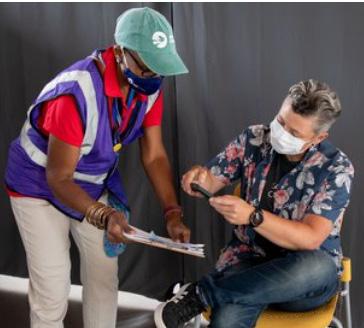
June 2021 —Peace Corps Response celebrates its 25th year.
September 2022 —Begin second rebrand to move towards a better future and focus on world peace, working together, breaking barriers, and creating friendships. Visit breakbarrierscreatefriendships.com for more information.
1961 Annual Report 1972 Stamp
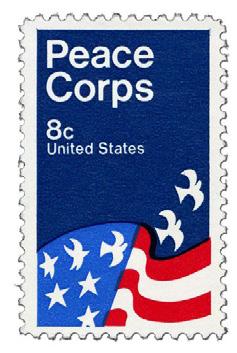
1965 Annual Report Cover 1973
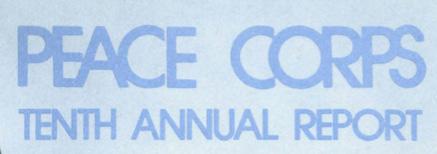
1967 Annual Report Cover 1971 Annual Report Cover
Logo
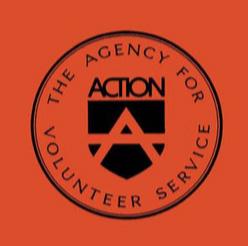
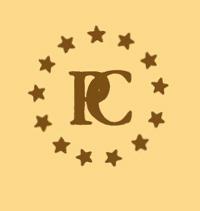

Corps Logo
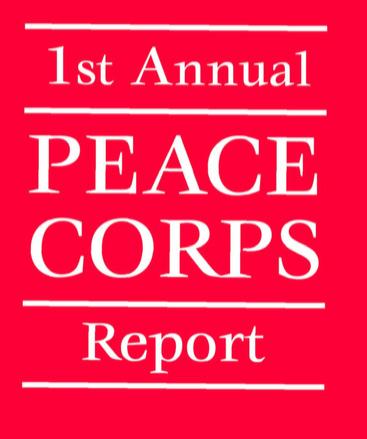


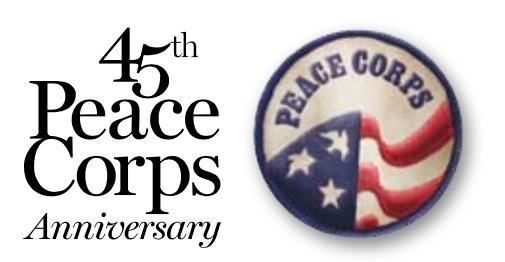
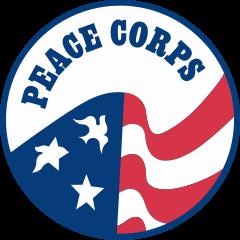
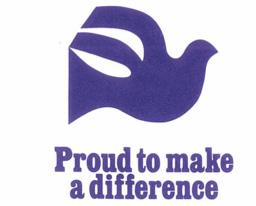
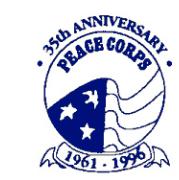
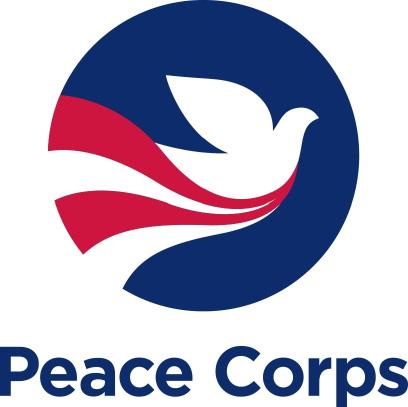
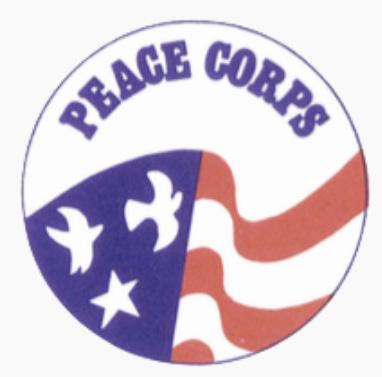
The Peace Corps held a poster contest to celebrate it’s tenth anniversary. The contest received over 2,000 original artwork submissions.
Above—Joseph Blachard, Peace Corps Director in office on final day of contest, April 1971 Left—Poster announcing 1971 contest, Designer Unknown.
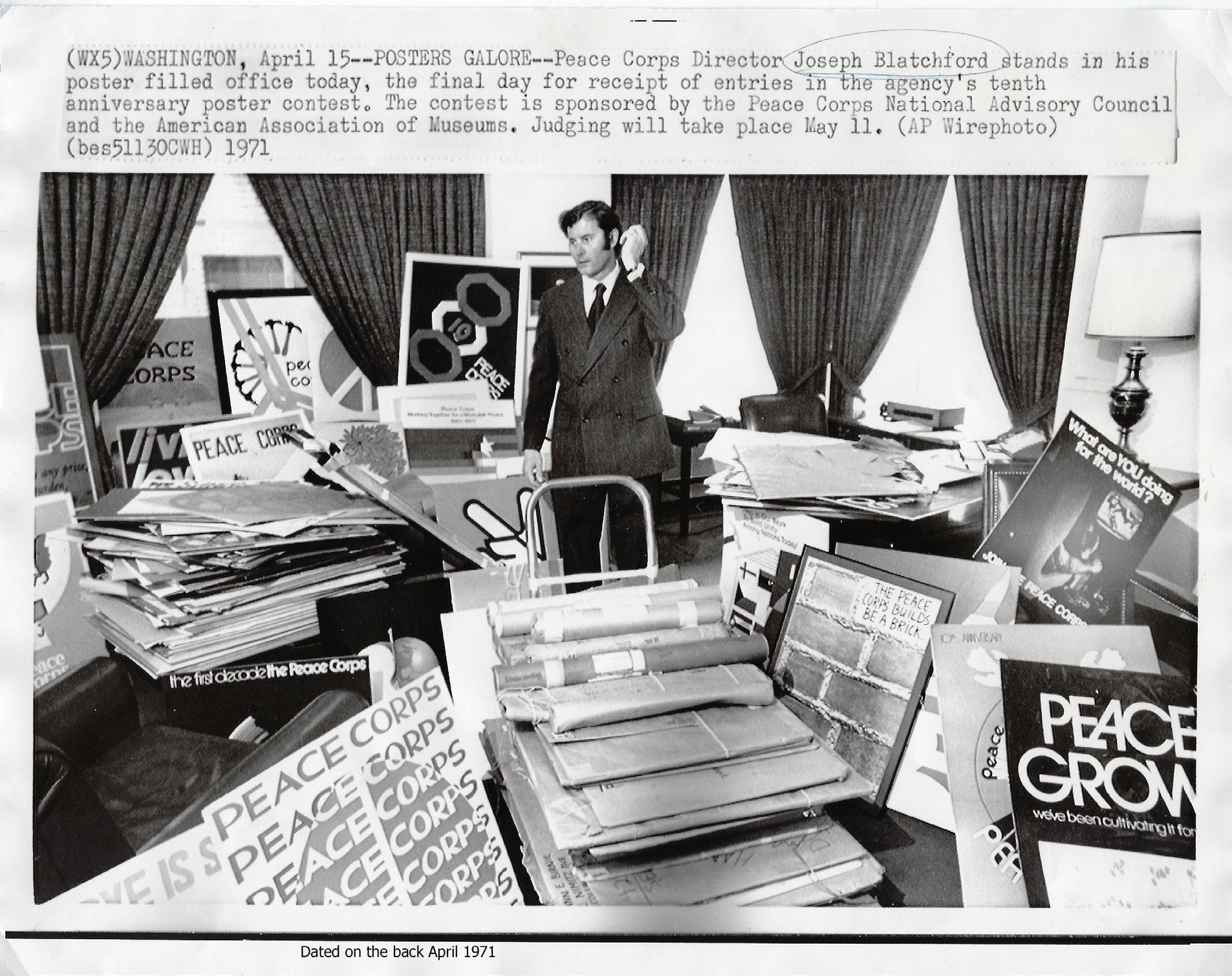
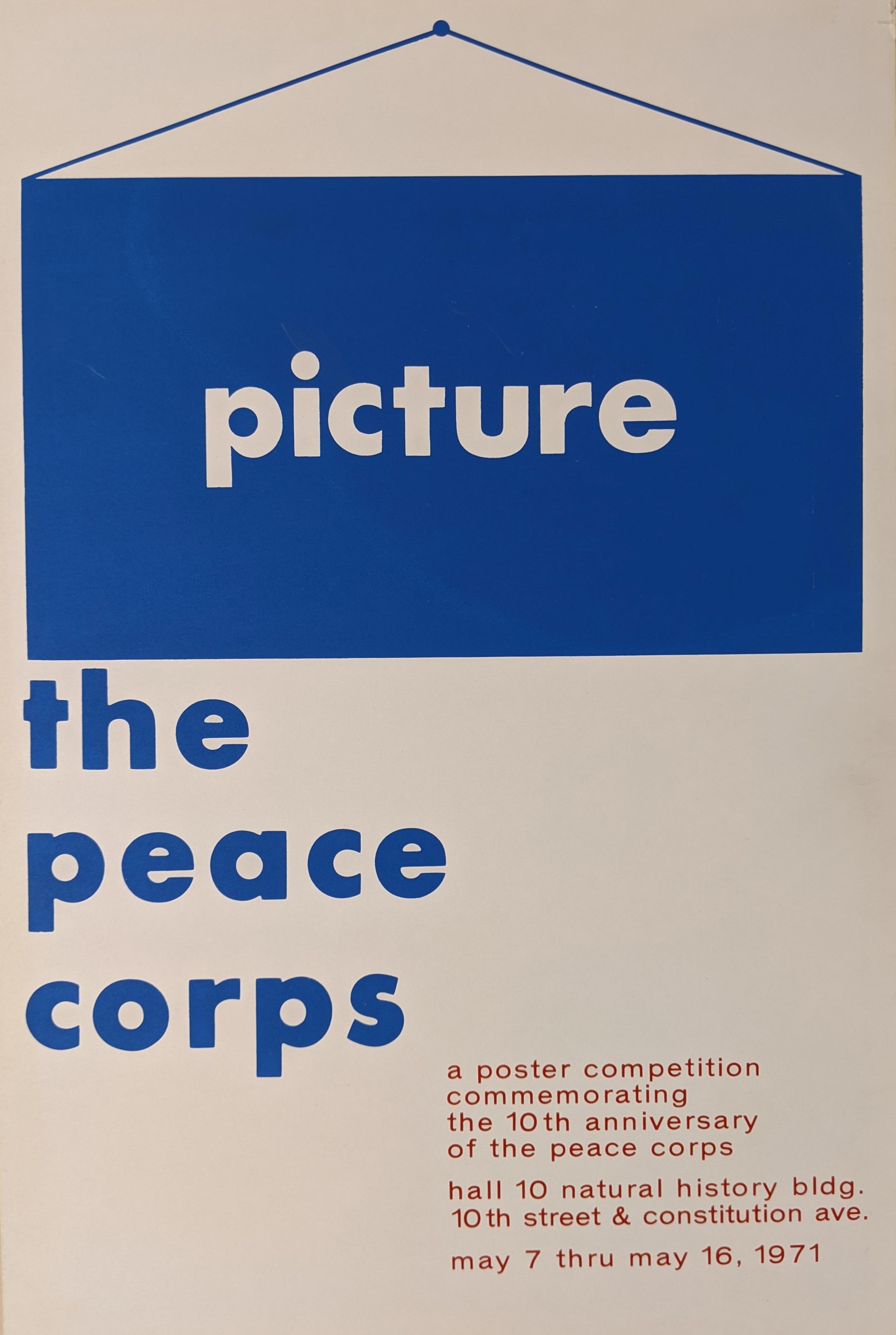
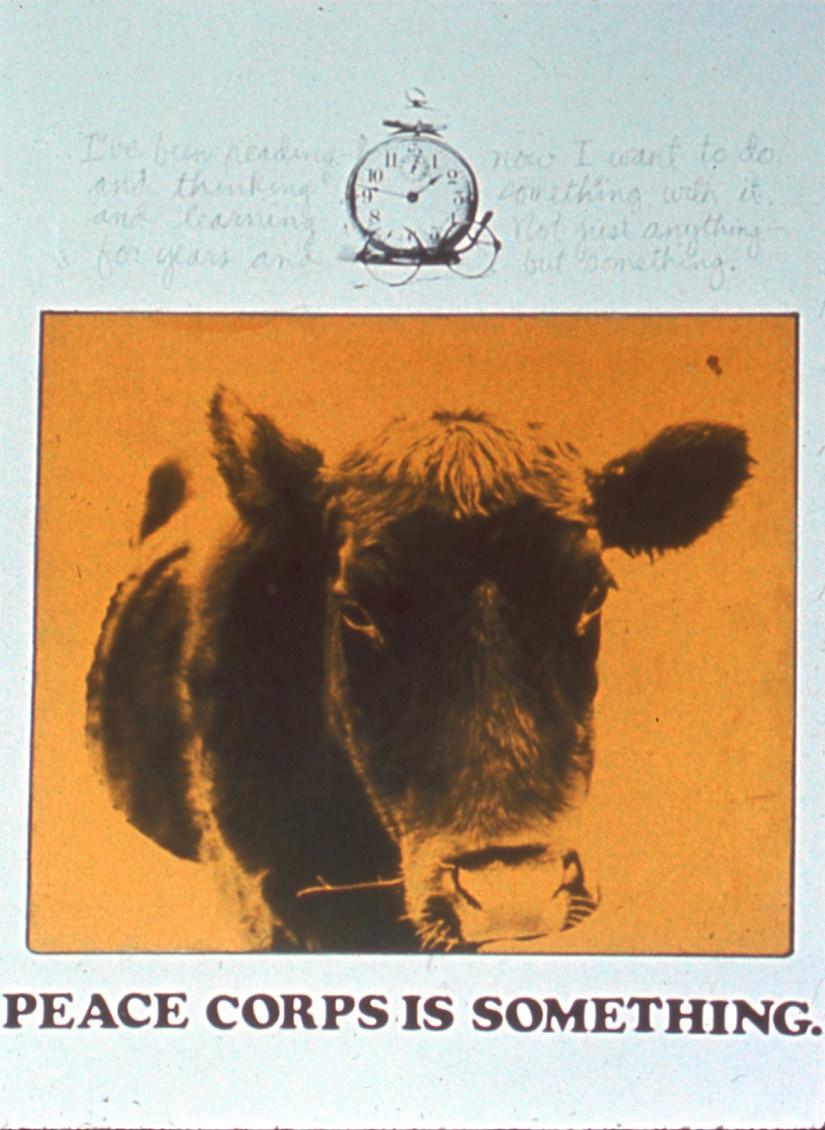
Above— 1971 Poster Contest Top 10, Sue Hintz from Kalamazoo, Michigan
Left—1971 Poster Contest Top 10, Designer Unknown
Next Page Left— 1971 Poster Contest Top 10, Tim Murray, Los Angeles, California
Next Page Right— 1971 Poster Contest Top 10, Patrick Koeller, Kalamazoo, Michigan
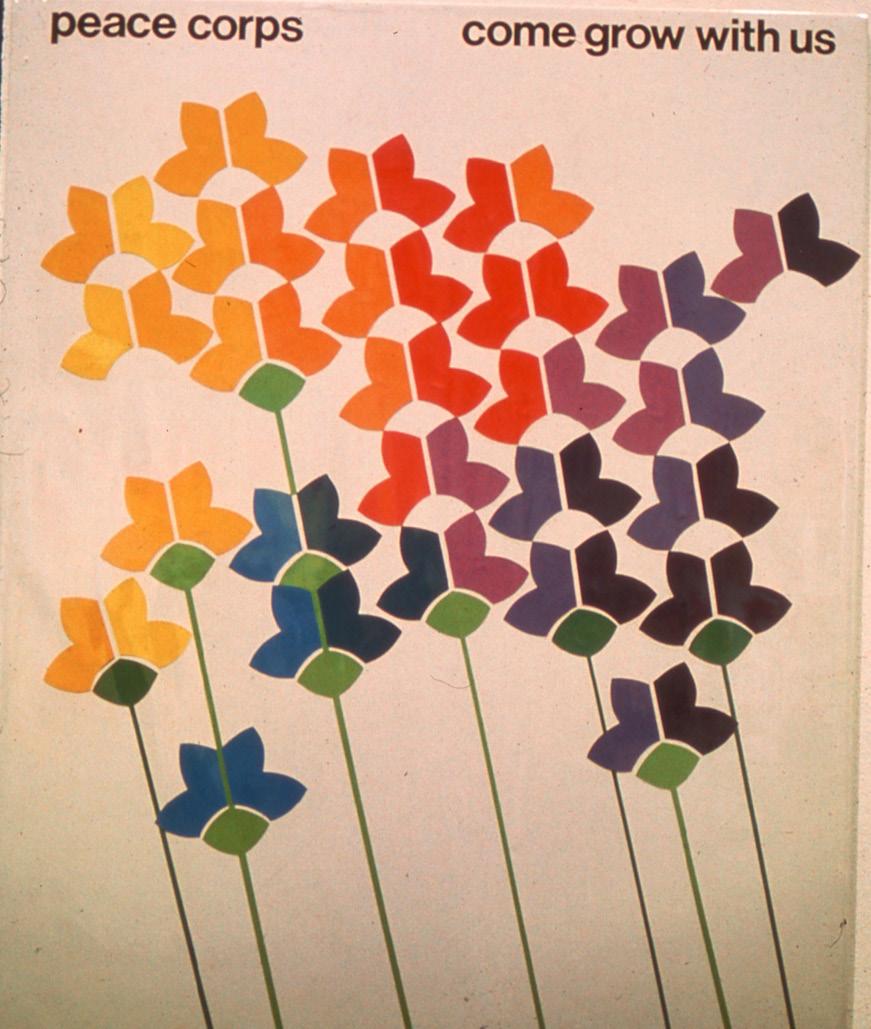
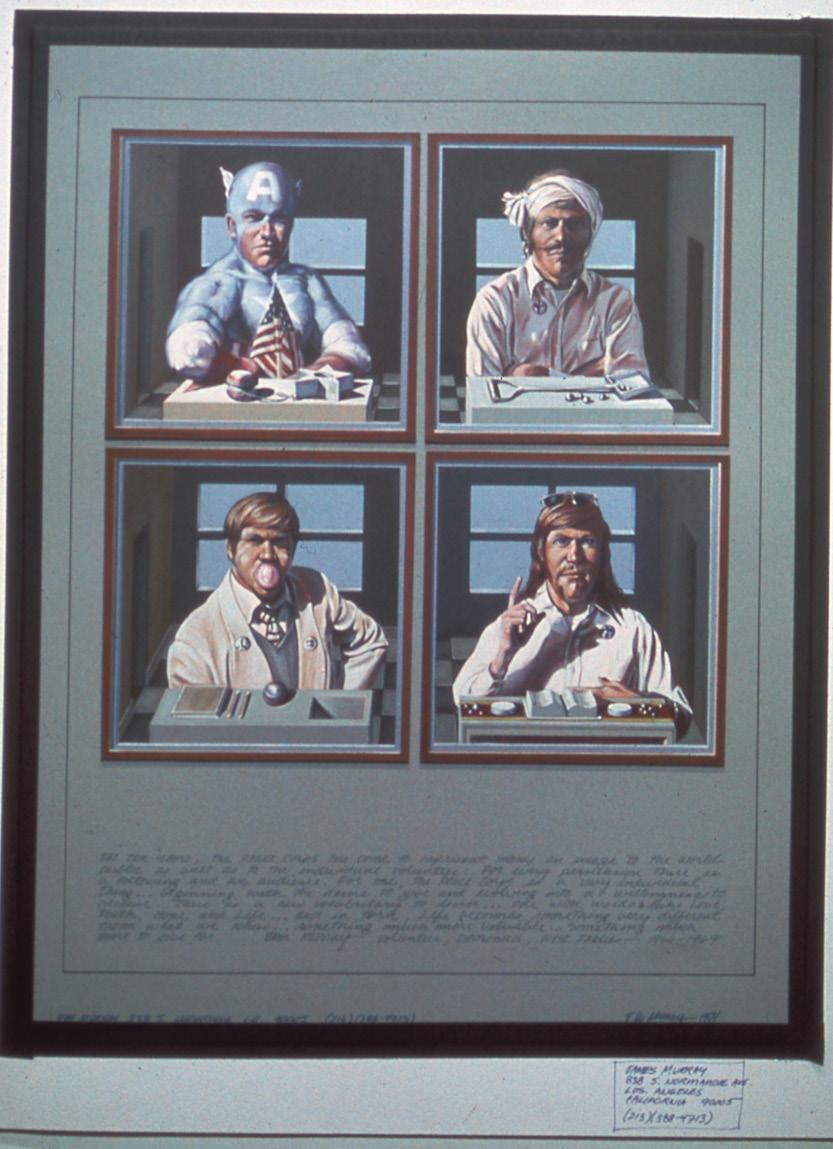
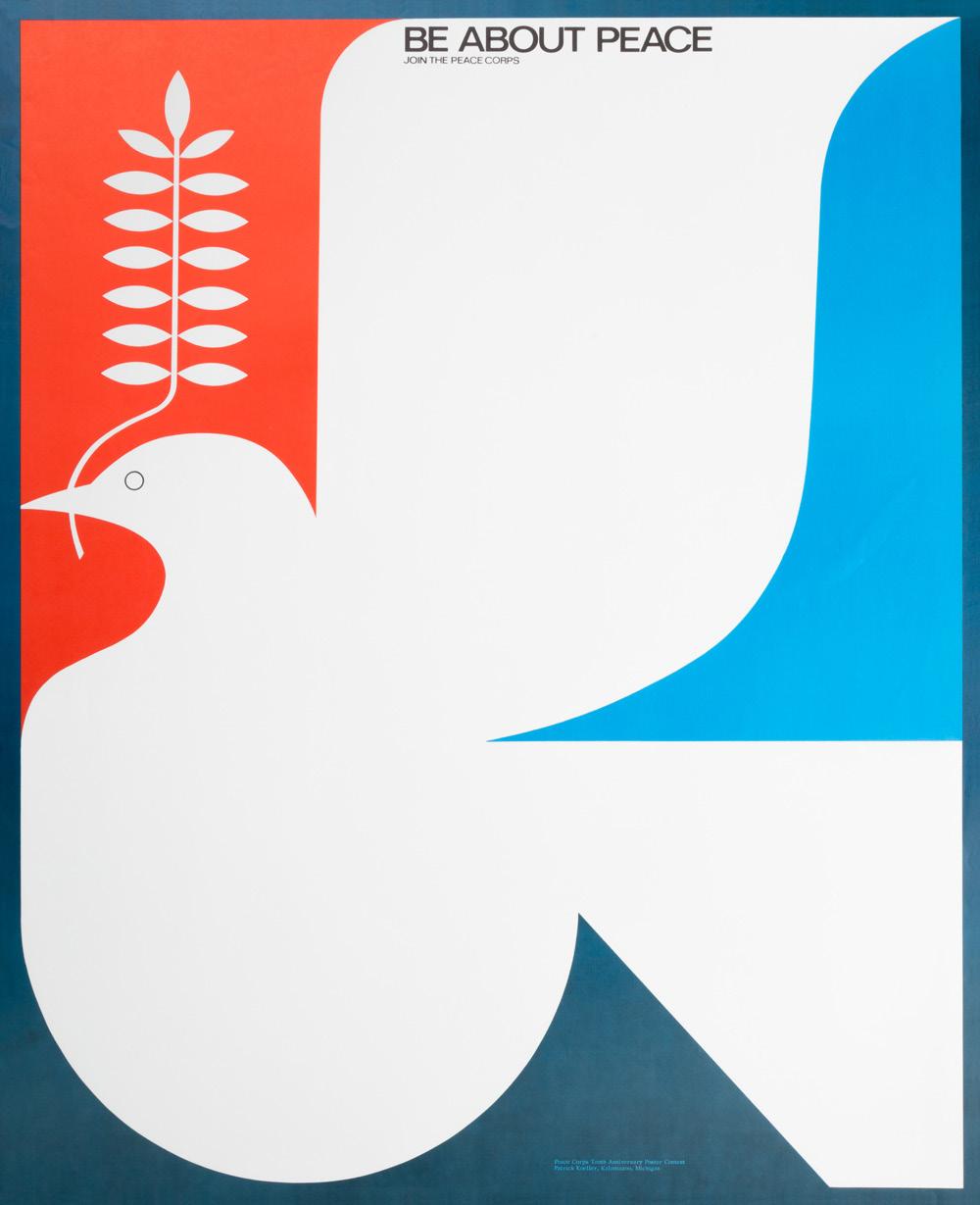
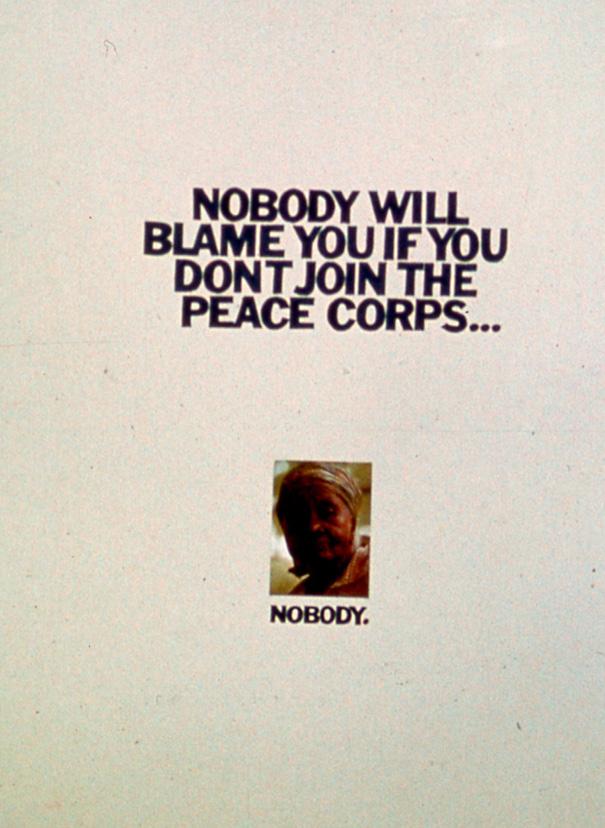
Above— 1971 Poster Contest Top 10, Beverly Okada, Seattle, Washington
Left—1971 Poster Contest Top 10, Designer Unknown
Next Page—10th Anniversary Poster Contest art show, Smithsonian Museum of Natural History May 1971, displaying 750 pieces from the 2,000 submissions.
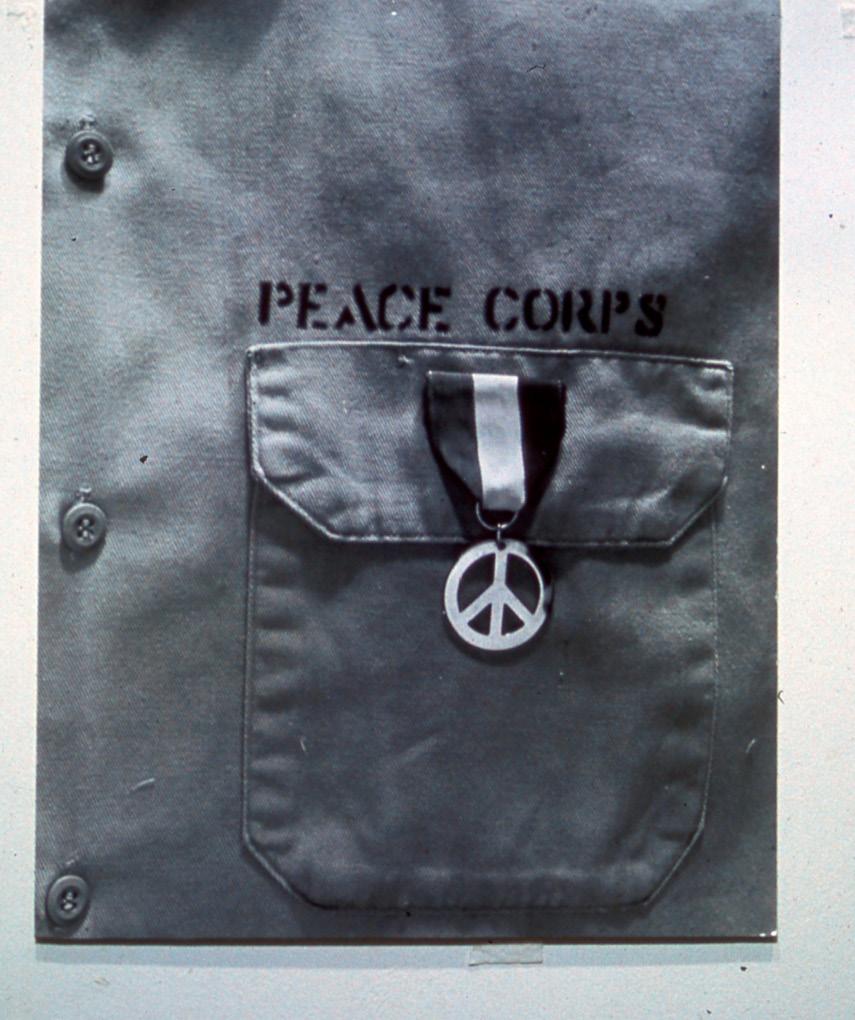
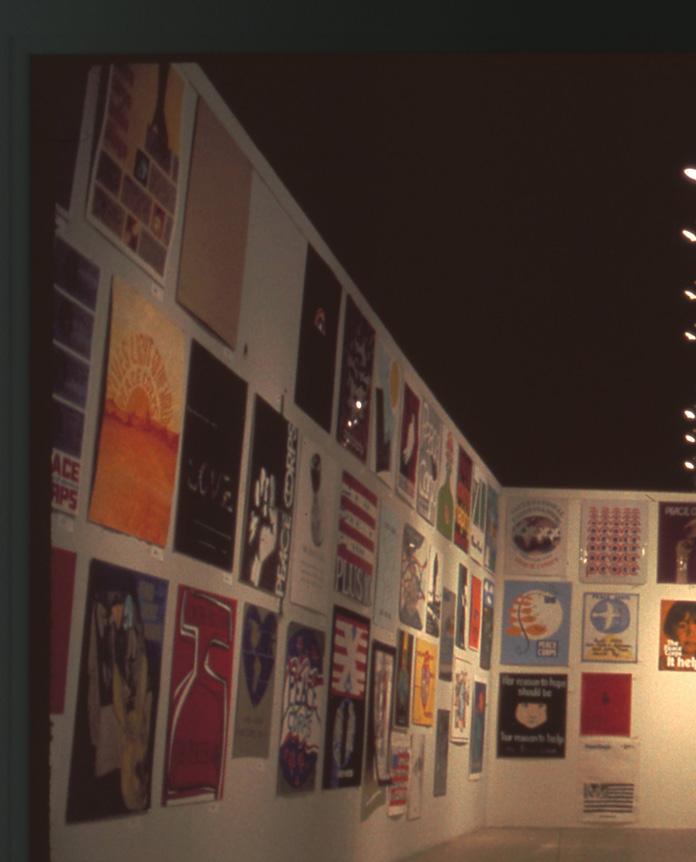

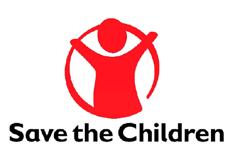
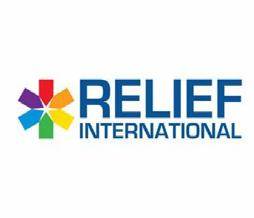
Delivers international aid in response to humanitarian crises.

Working to bridge cultures to bring peace and fight illiteracy and poverty.
Helps children break the cycle of poverty and addresses critical needs.

International Alert

Work to solve root causes of conflict.


Promote peaceful solutions for complex issues around the world.
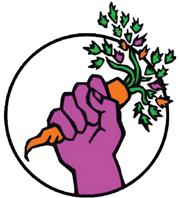
Independent collectives sharing free food with others.
Aims to “live in accordance with the justice and charity of Jesus Christ. Strives for hospitality and community.

Brings together local, national, and international volunteers to work alongside marginalized and vulnerable communities.

Provide food, water, and healthcare to needing communities around the world.
Works to fulfill the unique needs of children around the world.


Agency of UN responsible for international public health.
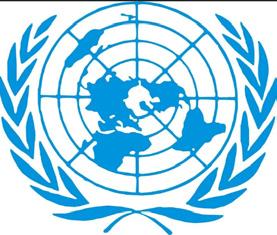
Anti-war demonstration group in New York City made up of older women.
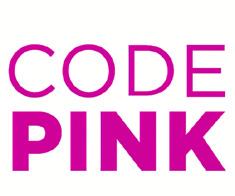
Women-led organization to end US wars and militarism.

Spread the word of God to communities around the world.
Seeks to hold international criminals accountable for war crimes.
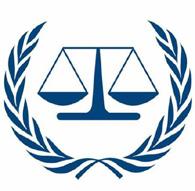
Use art to spread the message of world peace.
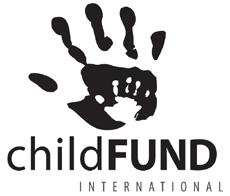

Catholic movement for peace. Sponsoring children around the world so they can have a better life.

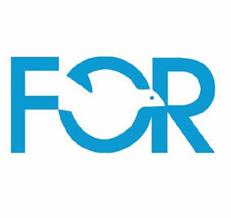
Religious nonviolent organizations that think religious people can never be at war.
Intergovernmental organization to maintain international peace and security.
In any industry, there are always others doing similar things. It is important the acknowledge the companies and organizations that are in the realm of striving for world peace and friendship. The goal is to find competitors that are doing something similar to the current brand direction, or the future brand direction.


A platform where people from all over the world can share any story they would like to tell with others.
An organization that offers a number of leadership training and professional development courses.

A platform where talented individuals can create classes to teach others their specialized skills.

An organization that supports international communities and change makers. Sharing different cultures all over the world in a wide variety of ways.
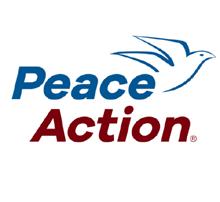
Team building and diversity training to teach teams of colleagues about respect, inclusion, communication, harassment, and discrimination.
Trying to find smarter solutions to the worlds problems.
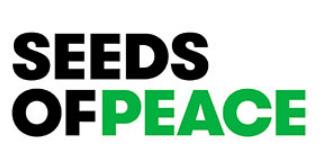
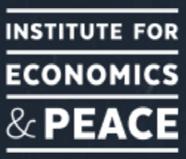
Leadership development organization committed to transforming youth into peaceful change makers.

A Food and Wine Festival that highlights local chefs with backgrounds in a wide variety of culinary backgrounds.

Aims to create a paradigm shift on how the world thinks about peace.
Matches English speaking students age 8-20 with pen pals across the US and around the world.

Visualization is an important step in brand development because it helps solidify a direction to work towards.
By visualizing the current state of the Peace Corps, and comparing it with a new visual direction, it will help form the overall ideas to complete the rebranding process. The brand grid is used to put a visual aspect into the feeling of the brand where it currently stands and the vision of where it could stand in the future. The future grid is an aspirational guide of how to direct the rebrand in order for it to have the desired final outcome.
We strive to break barriers and create friendships, in order to work together to establish a better future for humanity.
New Mission
Implementing intentions in order to address a topic as large as world peace requires multiple, diverse perspectives and levels of operation.
Looking at situations from an empathetic and understanding viewpoint. Working towards compassion and equality throughout all situations.
Prioritizing the need to work together to accomplish common goal. Addressing the need to have an alliance of humanity throughout the world.

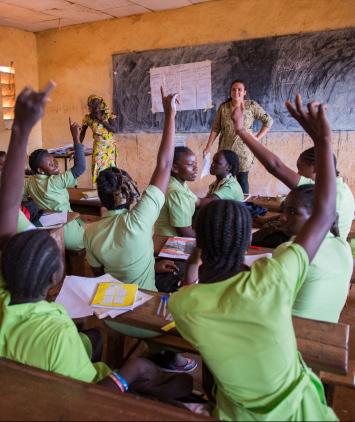

Helping small developing communities around the world.



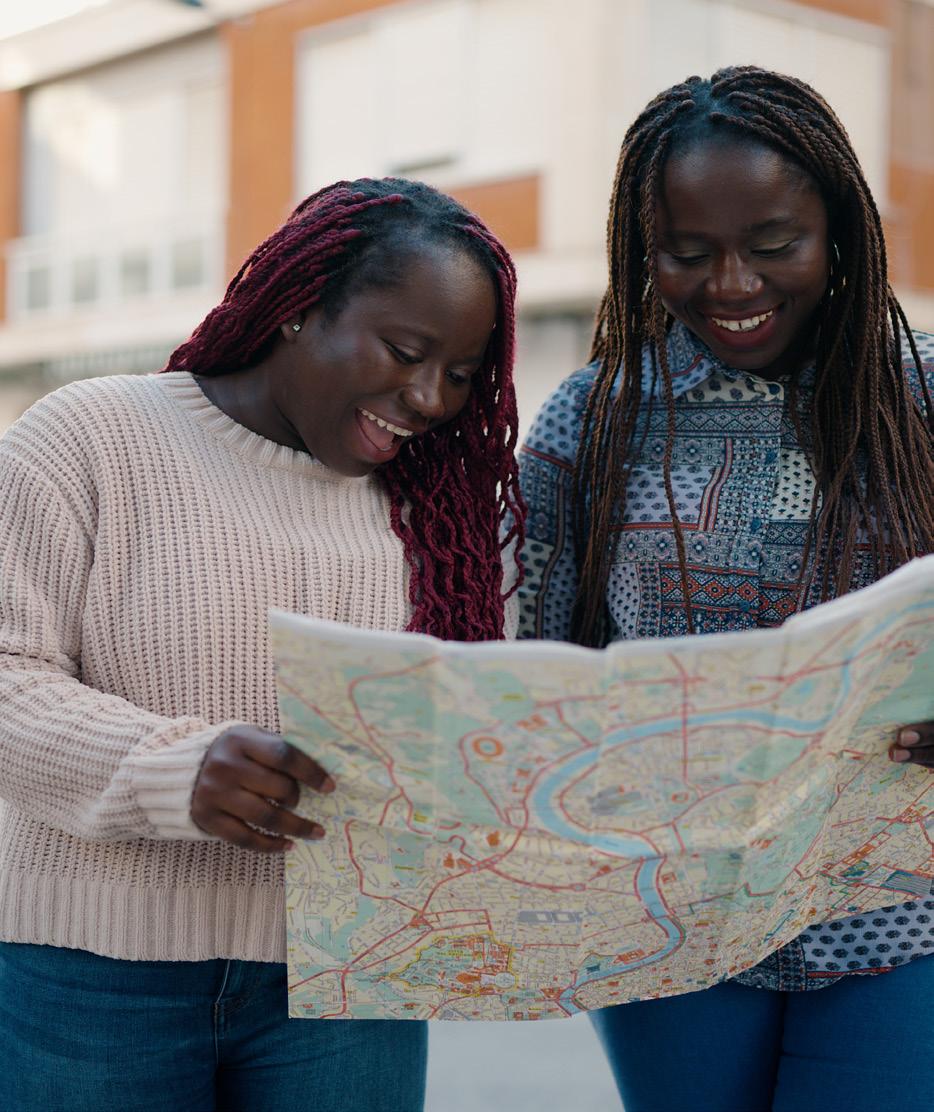
Helping


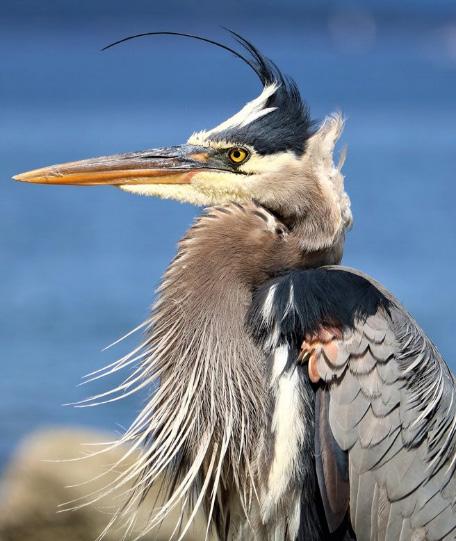
people come together to learn about other cultures and ways of life.
Audience profiles are created to help the brand develop based on the individual needs.
These audience profiles are created based on people that would have some kind of connection to the brand. They should be well-rounded, come from different backgrounds, and have different perspectives in order to really help the direction of development. When facing a critical point in brand development, personas can be references to guide decisions.
Occupation—Volunteer
Location—Kyiv, Ukraine
Education—Associates Degree
A. Wants to help empower women all over the world because women are smart and capable.
A. Has worked for various volunteer organizations around the world for 12 years because she wants to make a difference in the everyday lives of people that need help.
A. Wants to help communities around the world learn how to forage and garden so they can feed themselves.
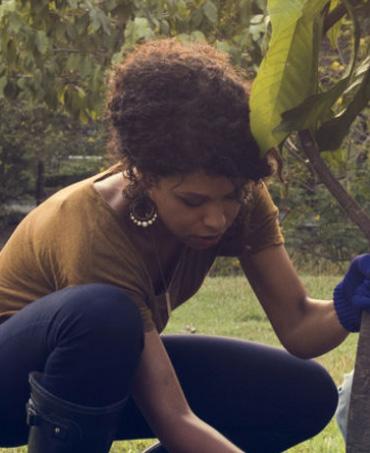
B. Has heard criticisms about Americans traveling because of the way they incorporate culture into the cultures they are helping.
B. Wonders if she is ever actually working towards world peace because things do not seem peaceful.
C. Has a difficult time traveling for personal reasons because the gas prices are so high.
C. Wants to advocate for land preservation because the natural ecosystem is more important than continued development.
Occupation—University Professor Location—Seattle, Washington
Education—Masters Degree
A. Wants to teach students about difficult situations and how to deal with them so they can become better humans.
A. Is fascinated by what creates a sense of community among individuals, and what creates a sense of division because he has seen a rise in some extremes.
B. Runs an after schools program to teach students how to communicate effectively because he wants to make it more normal.
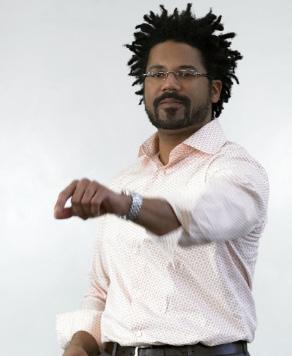
B. Wants to help humans evolve instead of devlove because we are at a very critical time in the history of humanity.
C. Strives to promote sustainable architecture and transportation so communities and countries can be more self reliant.
C. Thinks the majority of the worlds problems are due to communication issues and resources. If we could understand each other and have enough resources for the population, there would be less of a reason to fight.
C. Likes making trips to the natural spring to get his drinking water because he thinks it is the cleanest water available.

Occupation—Student Location—Shady Springs, West Virginia
Education—High School Diploma
Has never left home state.
A. Participates in protests for the Coal Industry because she does not want to see her family and friends suffer from the constant legislation changes.
A. Volunteers at the local school to help the children with art because encouraging talents is important.
B. Is thinking about joining a government organization so she can get out of West Virginia and get free college.
B. Has been in yearbook club every year because she wants to have an impact on what the final design looks like.
C. Goes down to the river every weekend to pick up trash because she does not want to see the area like that.
C. Thinks that Coal is the key to a sustainable future because that is what she has been taught.
C. Family collects rain water so they have a clean water supply in case their water gets turned off.
Age—49
Occupation—Politician Location—Washington D C
Education—Masters Degree
Came to US as a refugee and has made her way into the political world.
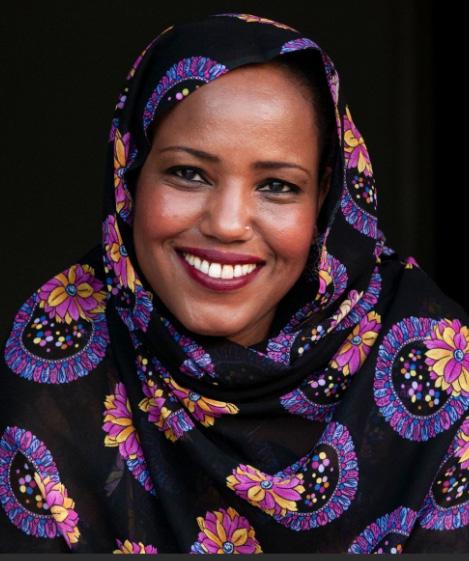
A. Tries to create a sense of community wherever she goes because she did not grow up with the community that she wanted.
A. Wanted to go into politics to try and make a difference in the world because she sees a lot of things that can be improved.
B. Makes weekly trips to schools so she can inspire the next generation to take part in creating a better world.
B. Thinks that it should be mandatory to learn about all religions so there are less misinformed biases and people can know more about other cultures.
B. Wants to inform people about her Muslim culture so they are less biased.
C. Only passes laws that are beneficial to humans and the earth because she wants to preserve the planet for future generations.
C. Only wears clothes that are made with natural dyed because she does not want chemicals to hard the environment.
Occupation—Therapist Location—Atlanta, Georgia
Education—Masters Degree

Born as an only child in Bosnia during times of war.
A. Always wants to continue learning so he can always try to come from a place of understanding.
A. Wants to help other refugees deal with their situations because longs for a sense of community
A. Has worked to learn about human emotions so he can teach others how to live better lives.
B. Has a different perspective of the world because he was born during wartime and did not grow up with a father.
B. Likes to keep alive cultural traditions because he does not want to succumb to American culture just because he had to move here.
C. Thinks having a personal garden is important so you can always have food.
C. Has solar panels and a water wheel at his house because he likes to be able to rely on the natural resources to live.
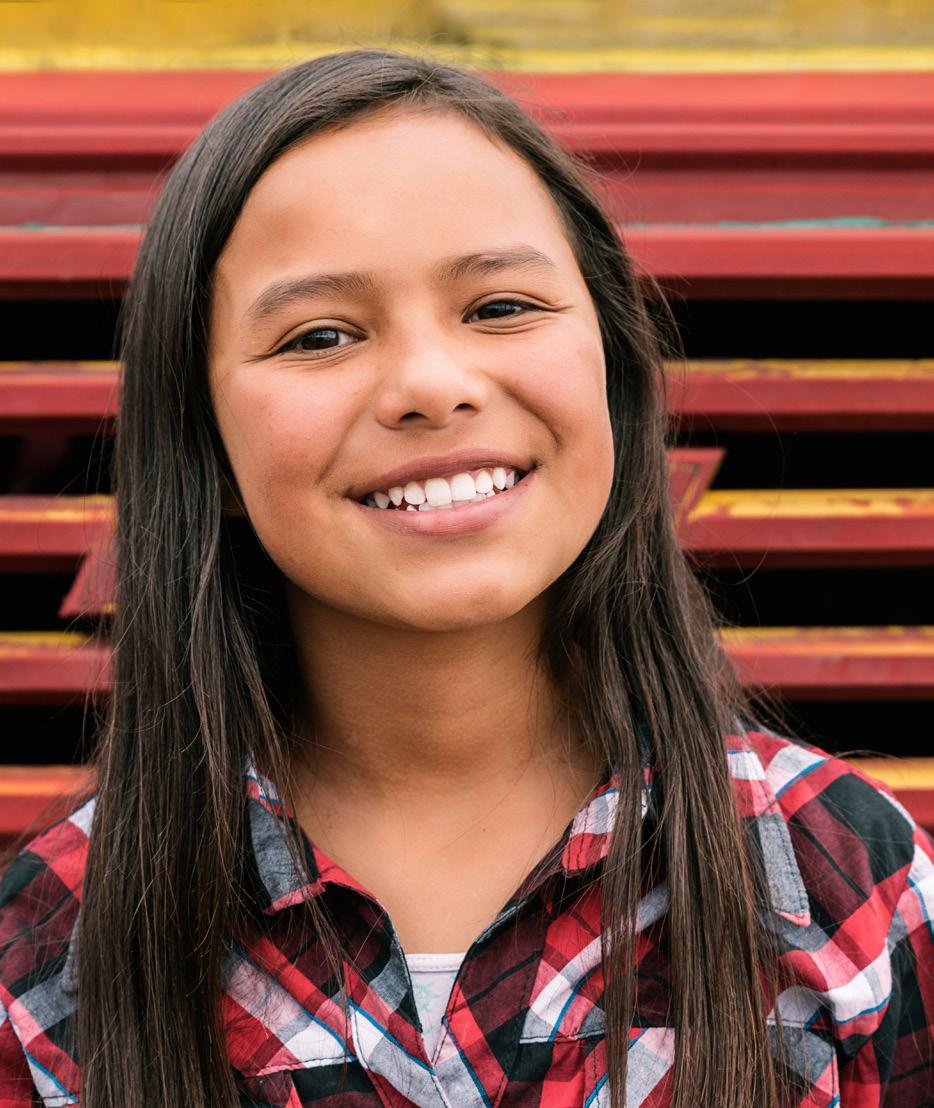
Occupation—Student Location—Mexico City, Mexico
Education—Elementary School
A. Makes friends with the house servants, because they are nice to her.
A. Keeps trying to understand how people can have such drastically different statuses because citizens treat her and her family so differently than they treat others.
B. Enjoys playing with guns because her father taught her how to shoot at a young age.
B. Doesn’t have many friends because she is under high security.
B. Is interested in learning more about helping community and creating good laws because she wants to support local citizens.
C. Never understood how people can die of hunger because he has never been hungry.
C. Thought for a long time that water only came from faucets because she rarely has explored nature.
Occupation—Independent Journalist

Location—Travels / No Permanent Home
Education—Various Trade Schools
Has been writing since he was 16.
A. Thinks that if people can understand more about what is going on in the world, they will care more about the future.
A. Makes friends with the locals wherever he goes by teaching them to juggle and dance.
B. Travels the world to expose corruption because he wants to do his part in making the planet a better place.
B. Can write and speak 7 different languages because being able to communicate and understand what people have to say is important.
C. Has learned to forage the lands where he travels so he does not have to go grocery shopping as often.
C. Thinks knowing how to hunt responsibly is important for sustainability because animals can be useful for many different things.
C. Wants to teach people about the importance of clean water because there are harmful diseases that can be transferred.
Age—40
Occupation—Independent Consultant Location—New York, NY
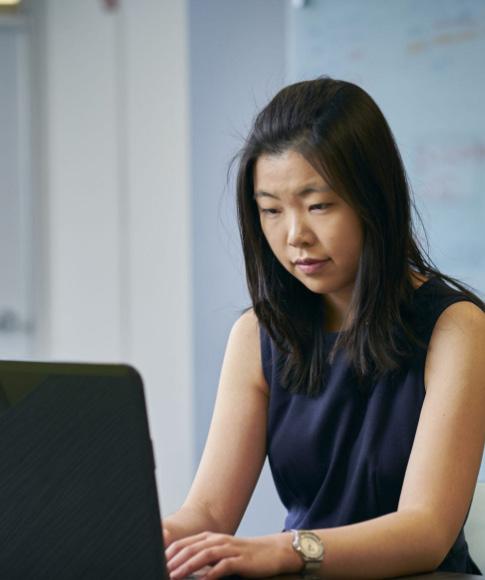
Education—PhD in Philosophy
A. Has traveled to 215 different countries so she can experience different cultures.
A. Enjoys interviewing locals in whatever countries she goes to. Her favorite questions is “what makes you happy?” because that is important for people to think about.
A. Wants to help humans learn how to communicate with each other so we can establish a stronger sense of unity.
B. Enjoys wondering about the future of humanity and our overall purpose on this earth because no one really knows the answer.
B. Likes to read at least 50 books per year so she can keep her brain sharp.
C. Tries to maintain a small footprint when it comes to waste because there is no sense in throwing away things that are still useful.
C. Wants to advocate for a more sustainable future so we can live cohesively with our planet.
R. Sargent Shriver at a Senate hearing in 1965. (Henry Griffin/AP) Smithsonian Institute Smithsonian Postal Museum
R. Sargent Shriver (left) with Pres. John F. Kennedy at the White House, 1961 Abbie Rowe—National Park Service/John F. Kennedy Presidential Library
Adobe Stock peacecorps.gov historyhub.history.gov gabrielkrieshok.com
This is a student project. For information on the actual US Peace Corps, please visit peacecorps.gov.